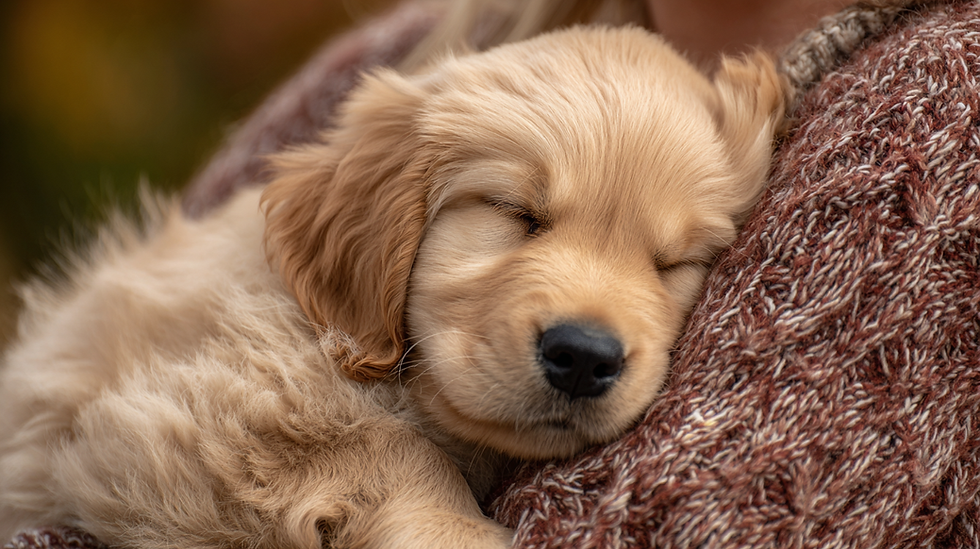Teaching the Name Response: How to Build Focus and Engagement
- nannykp76
- Oct 9
- 5 min read

Why the Name Response Matters
One of the most important skills a puppy can learn is responding to their name. It might seem like a small milestone, but it has an enormous impact on training, bonding, and safety.
A reliable name response is the gateway to focus, engagement, and effective communication. It also serves as a core safety tool that can protect your dog from harm in unpredictable situations.
Think about it this way. If your puppy hears their name and instinctively turns toward you, everything becomes easier. You can redirect them from chewing the wrong item, guide them away from danger, prepare them for a command, or simply enjoy a joyful shared moment. Whether you need to call your puppy away from an unsafe spot, interrupt a distracted moment, or get their attention before asking for a sit or recall, their name becomes your gentle invitation to connect.
Why the Name Response Should Come First
A name response is not about obedience. It is about connection. Before you can teach skills like "come", "stay", or “leave it,” your puppy first needs to be paying attention. If your puppy is not looking at you or tuned in to your presence, the rest of the training quickly falls apart.
When this skill comes first, training sessions flow more smoothly and frustration levels stay low. Without it, distractions can easily take over and make learning disjointed. With it, you have a cooperative partner who is ready to engage. A reliable name response lays the foundation for a lifetime of trust and communication.
How Puppies Learn Their Name
Puppies are not born knowing that a particular sound refers to them. Just like any other concept, learning a name requires repetition, tone, timing, and meaningful rewards. The goal is to create a crystal-clear association: When I hear my name, something good is coming my way.
Step-by-Step Starter Exercise
Begin in a calm environment with little to no distractions. Sit near your puppy or allow them to explore a safe, enclosed space.
Say your puppy's name once, in a warm, cheerful tone. Avoid repeating it several times in a row.
Wait for even the smallest response such as a glance, a head turn, or a pause in their movement.
The instant they respond, mark the behavior with a happy "yes" or "good".
Immediately reward them with a treat, praise, or a gentle pet.
Pause for a few seconds before repeating. Keep sessions short, upbeat, and positive.
If your puppy does not respond, simply pause. Do not repeat the name louder or in frustration. Instead, wait for a calmer moment or position yourself closer before trying again. This teaches your puppy that their name is always worth noticing and that paying attention leads to something enjoyable.
Keeping the Name Positive
To build a strong name response, it is essential to avoid using the name during moments of frustration or discipline. If "Luna" only hears her name when she is in trouble or about to be pulled away from something fun, the name will lose its power to engage.
Tips for Keeping It Positive
Use the name during happy, routine moments.
Say the name before offering meals or starting play.
Pair the name with a calm and predictable tone.
Avoid using the name in anger.
Never use the name as a recall unless a positive experience follows.
Think of the name as an invitation to connect, not a command to obey. That subtle shift builds trust and makes your puppy want to respond.
Practice in Real-Life Moments
Once your puppy responds well in a quiet setting, it is time to practice in a variety of environments. This ensures they learn that their name matters no matter what is happening around them.
Everyday Practice Opportunities
Call the name before giving a cue like "sit" or "come".
Say the name while your puppy is sniffing in the yard or on a walk.
Use the name during play, then pause and reward eye contact.
Practice during daily transitions such as before leashing up, entering a new space, or coming out of a crate.
Over time, "name means check in" becomes second nature. Eventually, your puppy will look toward you even without a treat in hand.
Troubleshooting Common Challenges
It is completely normal for puppies to ignore their name sometimes, especially in the beginning or when distractions are strong. With patience, you can troubleshoot these challenges.
If your puppy is ignoring you:
Lower distractions by practicing in a quieter space.
Increase the reward value with tastier treats or a favorite toy.
Use a softer or higher-pitched tone to capture attention.
If your puppy is inconsistent:
Avoid overusing their name without follow-through.
Stop pairing the name with negative experiences.
Return to short, high-reward training sessions to rebuild the association.
If your puppy looks but then walks away:
Reward the glance immediately, even if they do not move toward you yet.
Gradually shape the behavior into coming closer.
Avoid chasing your puppy or turning it into an unwanted game unless the activity is intentional.



Comments